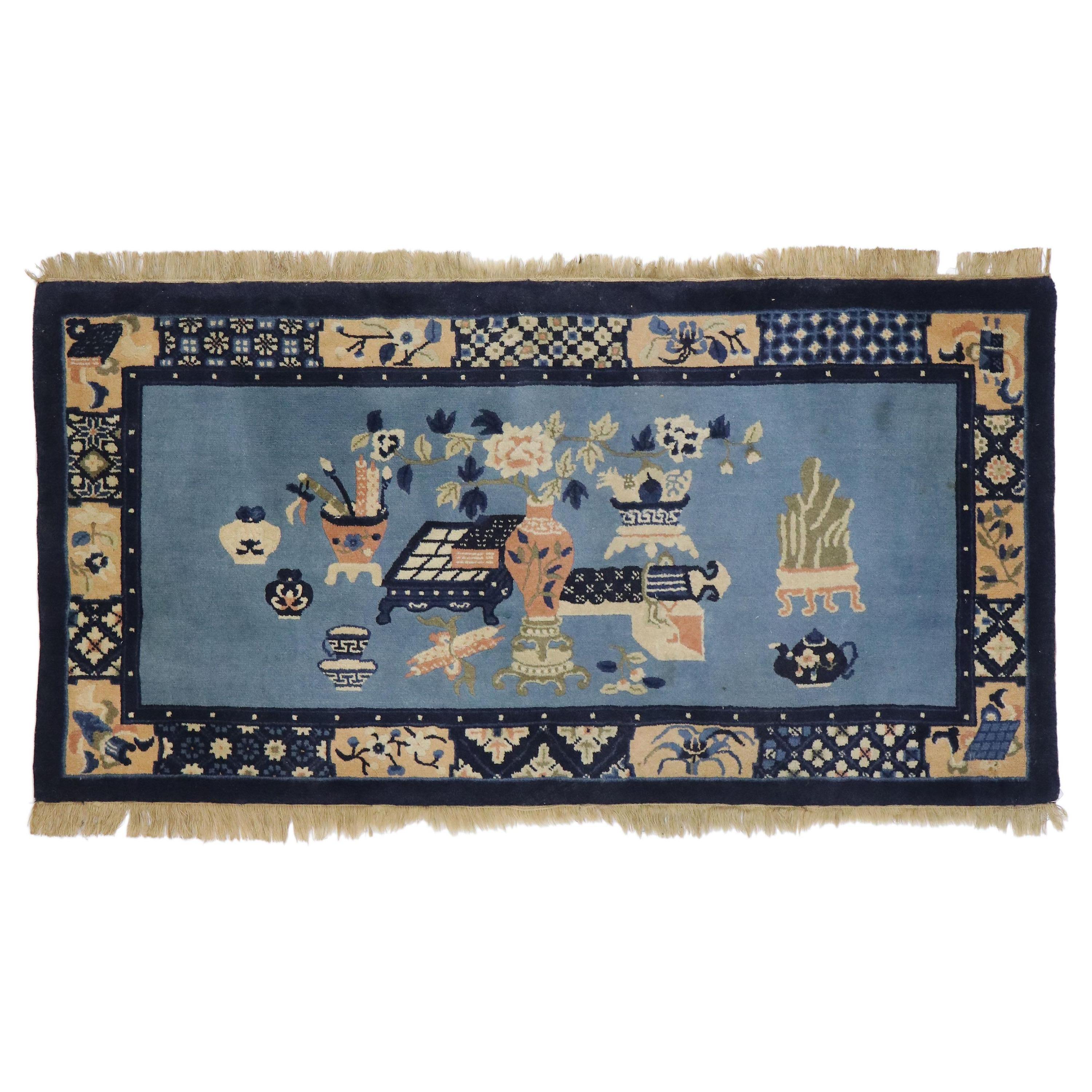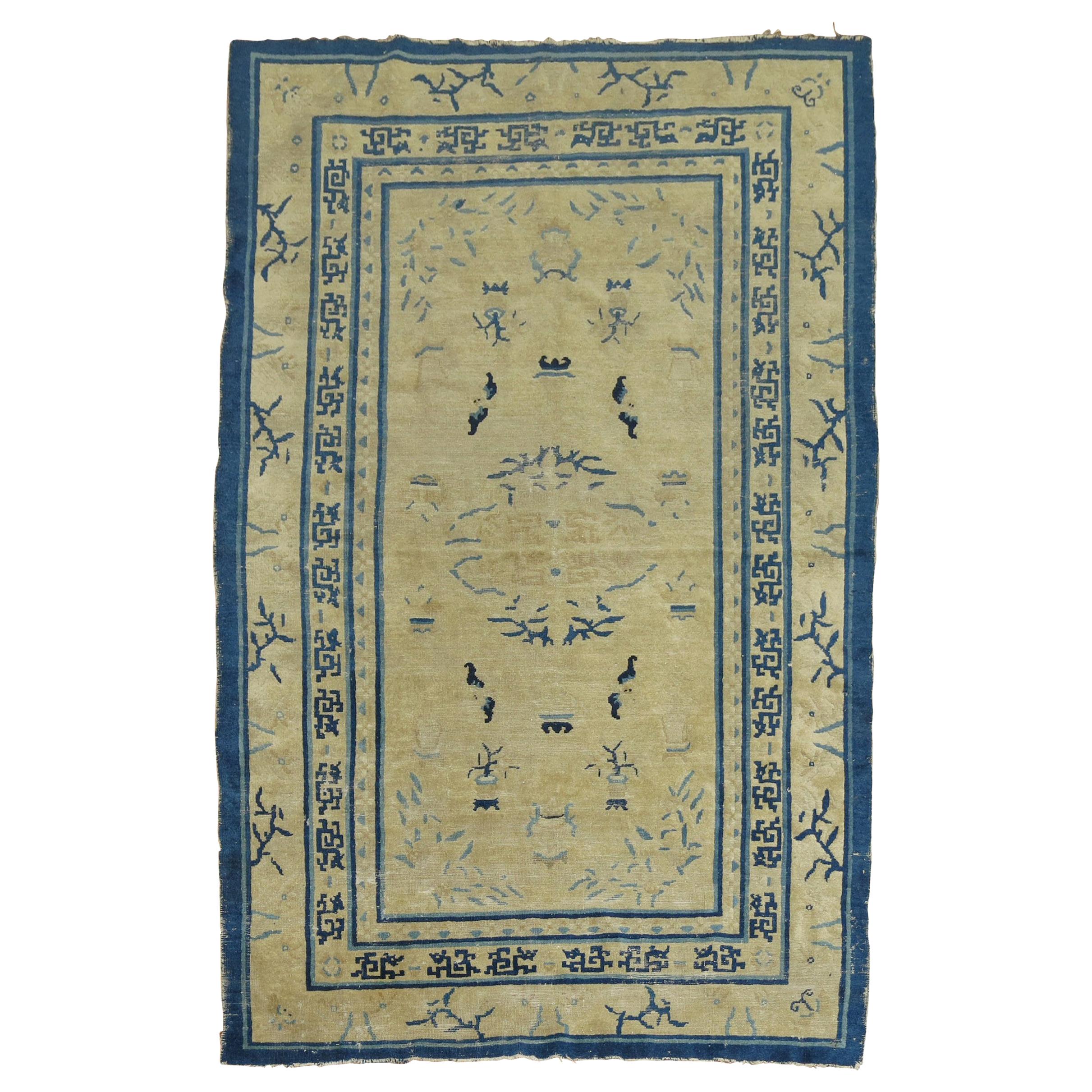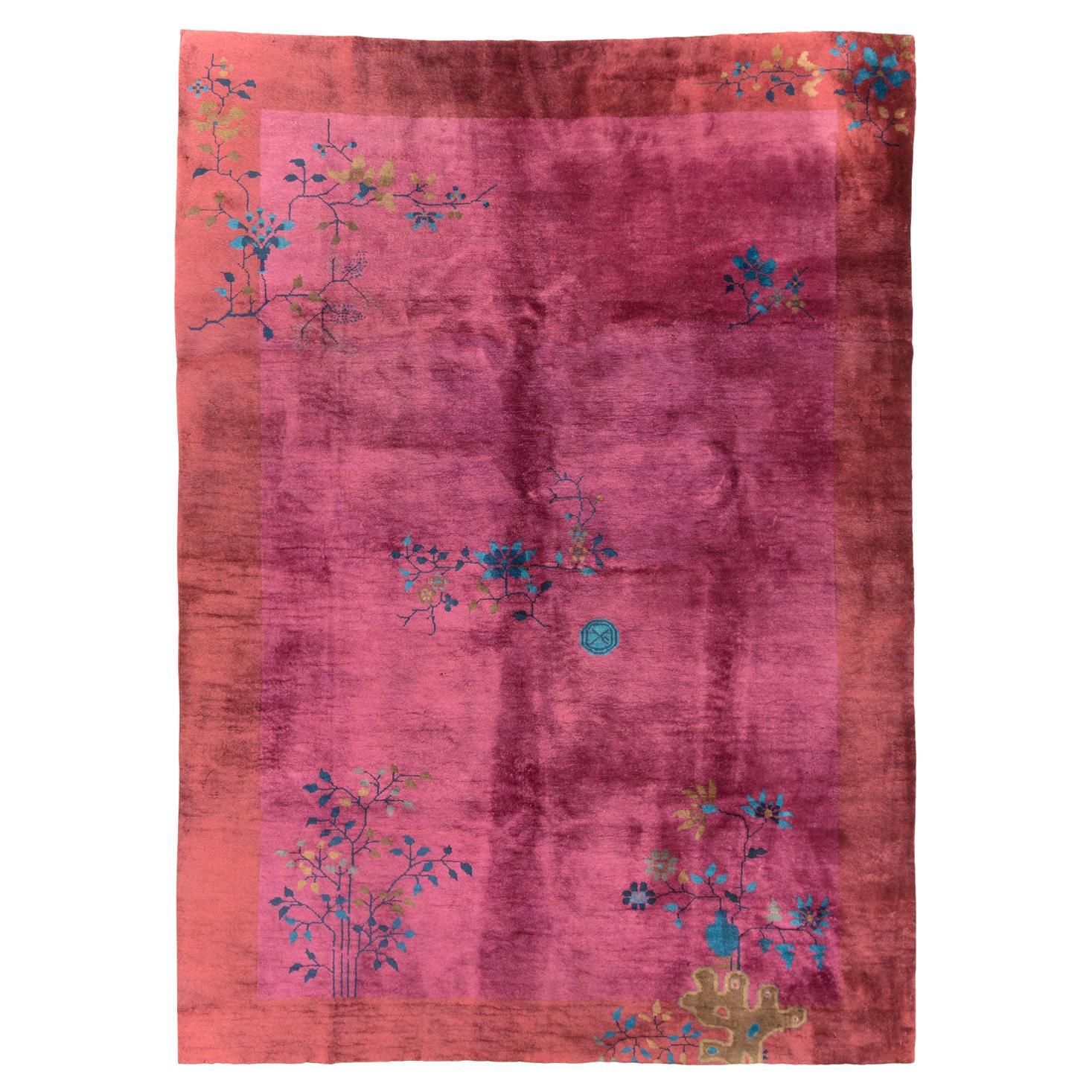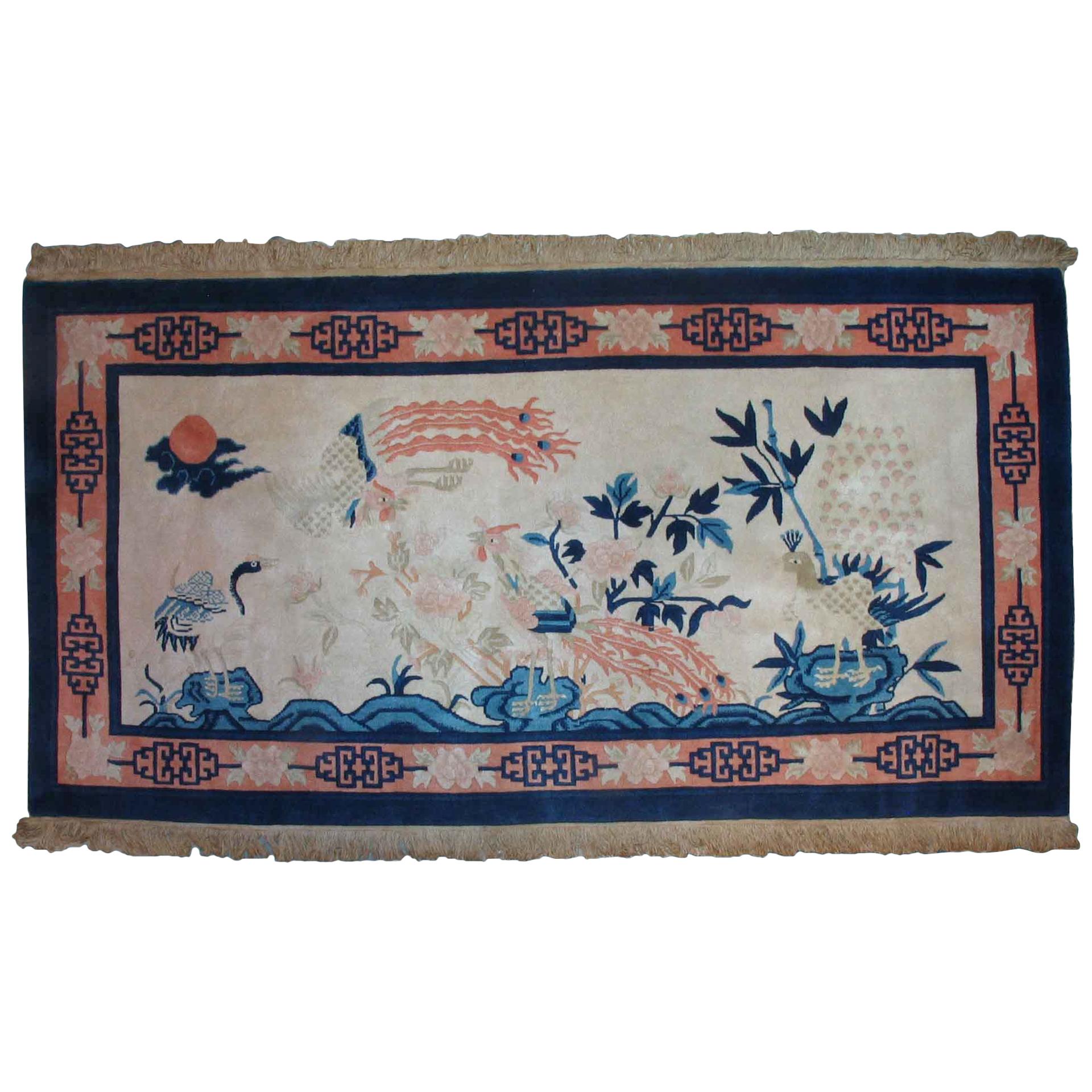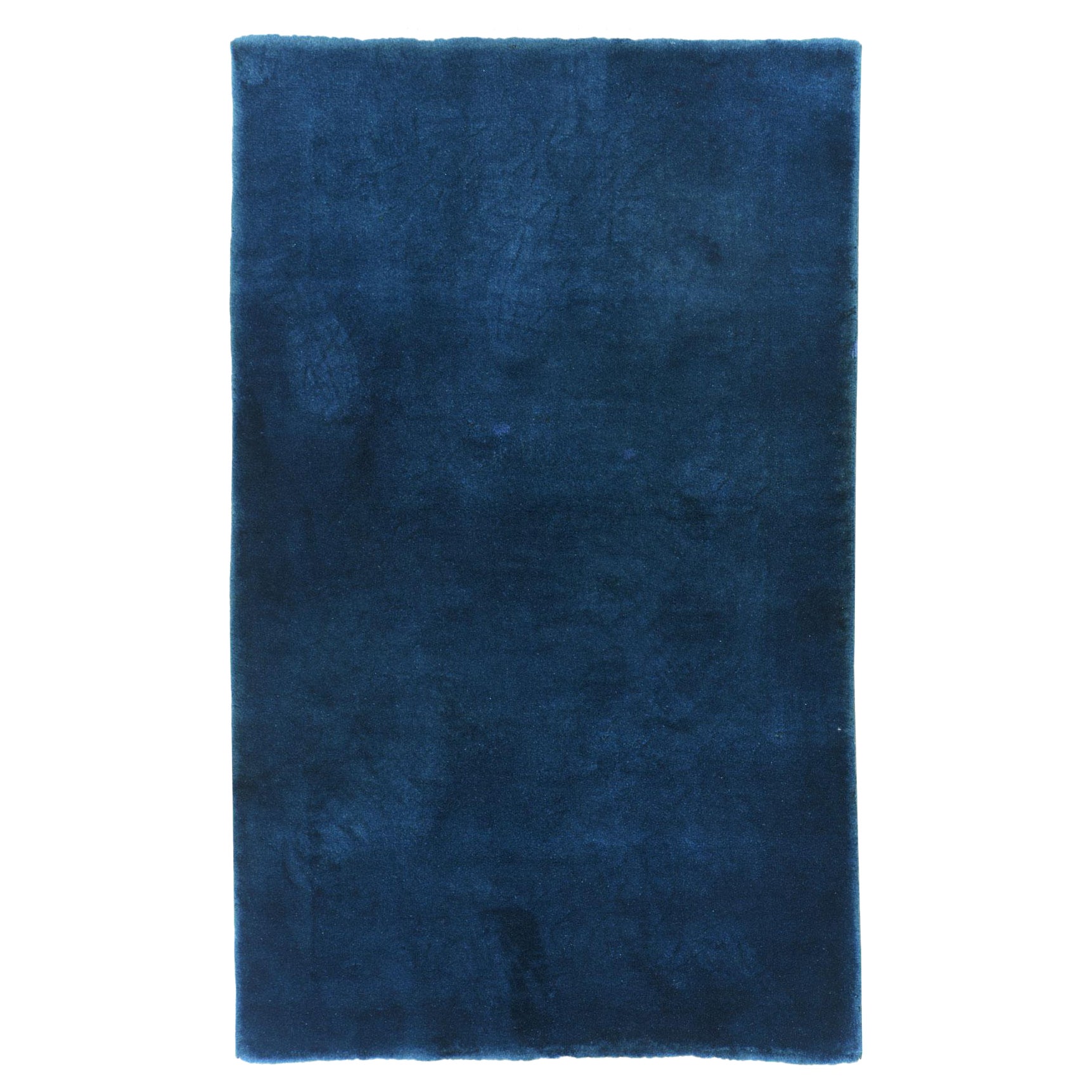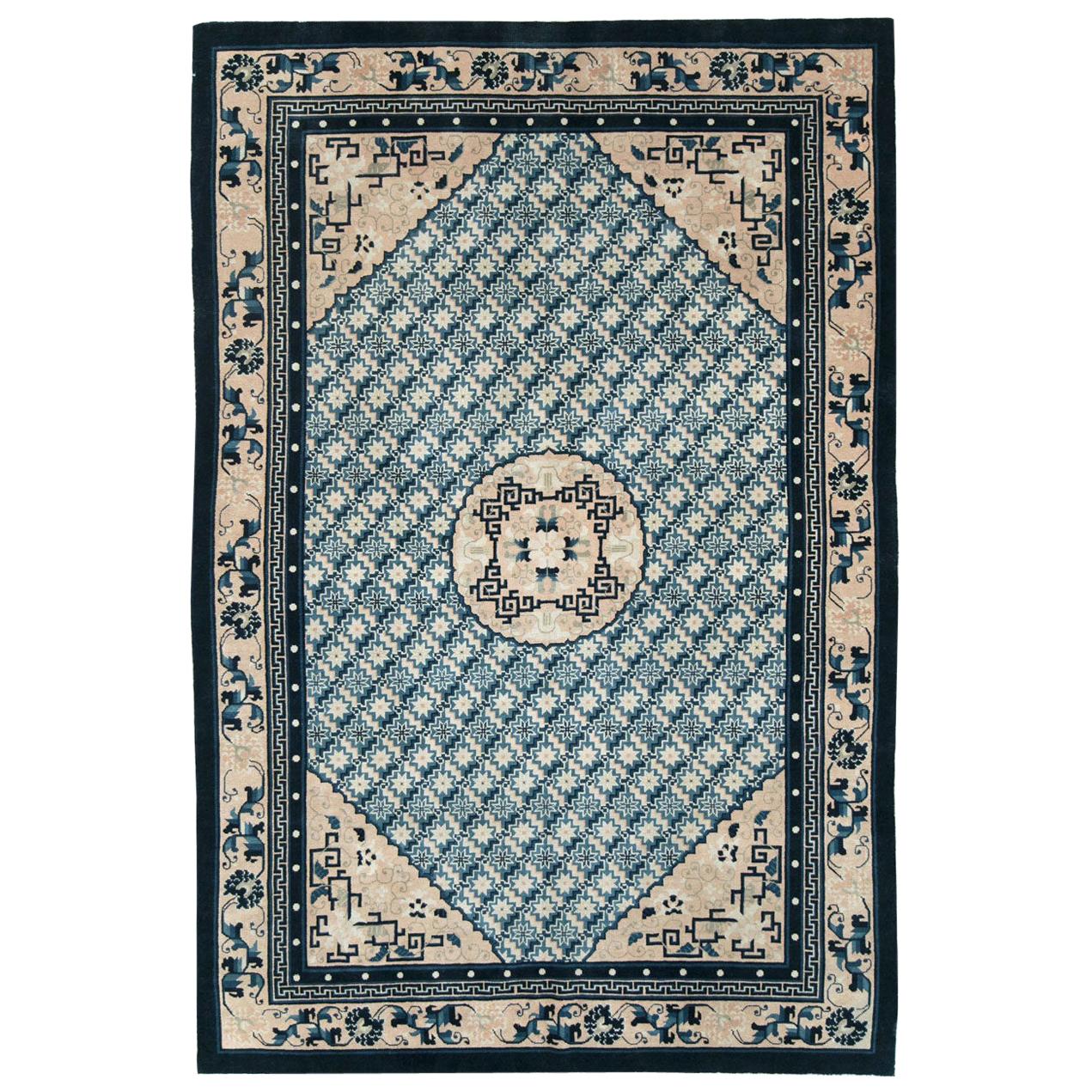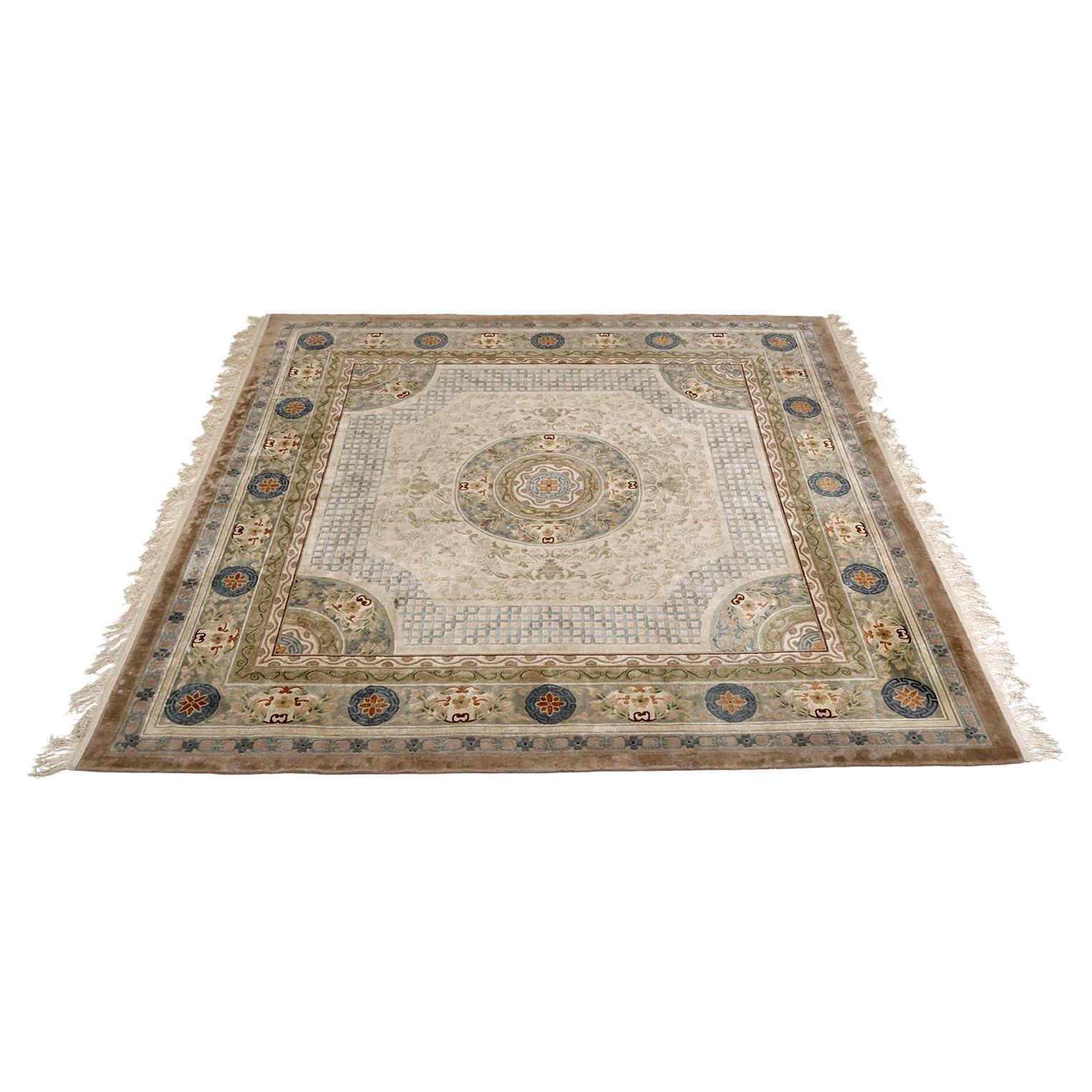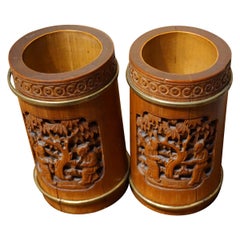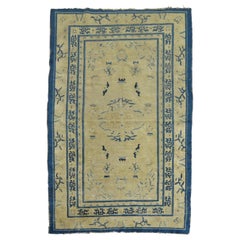
Early 20th C. Blue & White Chinese Rug Depicting Scholar's Brush Pots & Objects
View Similar Items
Want more images or videos?
Request additional images or videos from the seller
1 of 9
Early 20th C. Blue & White Chinese Rug Depicting Scholar's Brush Pots & Objects
About the Item
- Dimensions:Width: 25 in (63.5 cm)Length: 51 in (129.54 cm)
- Style:Chinese Export (In the Style Of)
- Materials and Techniques:Wool,Hand-Knotted
- Place of Origin:
- Period:1910-1919
- Date of Manufacture:1910's
- Condition:Wear consistent with age and use. Minor losses. Some wear areas as photographed.
- Seller Location:Vancouver, CA
- Reference Number:1stDibs: LU5099222062282
About the Seller
5.0
Vetted Seller
These experienced sellers undergo a comprehensive evaluation by our team of in-house experts.
Established in 2007
1stDibs seller since 2019
25 sales on 1stDibs
More From This SellerView All
- 19th Century Pair of Chinese Scholar's Carved Bamboo Brush Pots BrassLocated in Vancouver, British ColumbiaHand carved intricate Chinese scholar's bamboo brush pots with brass rings and script. Original warm patina and some cracks as photographed present, c...Category
Antique 1880s Chinese Qing Scholar's Objects
MaterialsBamboo
- Large Asymmetrical Art Deco Chinese Ochre Hand-knotted Wool RugLocated in Vancouver, British ColumbiaCirca 1930's Warm ochre hues in luxurious wool contrasted against royal blues and an asymmetrical floral theme. Excellent overall pile condition with minor age and use spots as sh...Category
Vintage 1930s Chinese Art Deco Chinese and East Asian Rugs
MaterialsWool
$4,875 Sale Price25% Off - 19th Century Chinese Qing Dynasty Silk Embroidery Altar BannerLocated in Vancouver, British ColumbiaFine Qing Dynasty Chinese Altar weaving hand embroidered in silk. Intricate and complex weave depicting a celebration of Spring with a Royal Court Scene rendered in breathtaking deta...Category
Antique 1870s Chinese Qing Chinese and East Asian Rugs
MaterialsSatin
$1,388 Sale Price24% Off - Rare Art Deco Nichols Hand Knotted Navy Chinese Dragon & Phoenix Rug Yin & YangBy Walter NicholsLocated in Vancouver, British ColumbiaRare Nichols rug with an unusual dragon and phoenix theme likely custom made. Blossoming honeysuckle plant flanked by smaller plants and perched above a dragon and phoenix (Yin & Yan...Category
Vintage 1930s Chinese Art Deco Chinese and East Asian Rugs
MaterialsWool
$7,120 Sale Price20% Off - Early 20th Century Antique Kurdish Geometric Tribal Hand Knotted RugLocated in Vancouver, British ColumbiaA lovely medley of warm colours and bold tribal pattern highlight this beautifully hand knotted rug. The rug showcases geometric themes with kite medallion and floral patterns in ric...Category
Antique Early 19th Century Central Asian Tribal Central Asian Rugs
MaterialsWool
- Early 20th Century Fine Turkmen Bokhara Supple Tribal in Soft Dense WoolLocated in Vancouver, British ColumbiaVery fne Turkmen tribal rug tightly hand knotted in soft, luxurious wool. Speaks for itself. The pile is in healthy condition. Excellent symmetry and vivid red shade. The fringe is i...Category
Antique Early 1900s Turkmen Tribal Central Asian Rugs
MaterialsWool
$7,600 Sale Price20% Off
You May Also Like
- Antique Chinese Baotou Scholar’s Rug with Confucian Pictorial DesignLocated in Dallas, TX77586, antique Chinese Baotou Scholar’s rug with Confucian Pictorial Design. This hand-knotted wool antique Chinese Baotou rug features a pi...Category
Early 20th Century Chinese Chinoiserie Chinese and East Asian Rugs
MaterialsWool
- Tan Blue Color Early 20th Chinese Peking Oriental Antique Wool RugLocated in New York, NYRare size Chinese Peking rug in tan and blue, circa 1910, measures: 4'11" x 7'6" Peking rugs consist of designs that are simpler and asymmetrical, often tending toward modern western Art...Category
Early 20th Century Chinese Archaistic Chinese and East Asian Rugs
MaterialsWool
- Early 20th Century Chinese Peking Large Room Size RugLocated in New York, NYAn antique Chinese Peking large room size carpet handmade during the early 20th century. Measures: 10' 10" x 15' 2".Category
Early 20th Century Chinese Art Deco Chinese and East Asian Rugs
MaterialsWool
- Early 20th Century Handmade Chinese Ningxia Square Throw RugLocated in New York, NYAn antique Chinese Ningxia square throw rug handmade during the early 20th century. Measures: 2' 3" x 2' 4" The craft of the hand-knotted carpet in China, and the surrounding areas including Mongolia and Tibet, extends into the early centuries of the first millennium, C.E., but we really have a firm grasp only beginning in the later 16th century with large, very coarsely woven carpets, often depicting dragons, created for the Imperial Forbidden City palaces. Chinese carpets have always been commercial and there are no tribal groups responsible for any of the carpet weaving strains. When the Ming Dynasty fell in 1644, with no Imperial patrons, production moved to the city of Ningxia in north central China where several workshops turned out more finely woven pieces for the Mandarins of the administrative Ch’ing bureaucracy and well-to-do merchants. Ningxia was the major Chinese carpet center up through most of the 19th century, with first allover and then medallion designs on cotton foundations in medium weaves. Palettes were initially limited to yellows, dark blue and cream, but later widened to include reds, browns and even green. These antiques were the first Chinese carpets to be exported to the West and they fitted in well with the craze for Chinese blue-and-white porcelain in the second half of the 19th century. Ningxia also wove shaped and rectangular small rugs for saddle underlays, chair (“throne”) seats and shaped backs, pillar carpets with dragons or monks for Buddhist monasteries, and long divided runners for monastery meditation halls. These small rugs are among the most collectible of all Chinese weavings. Weavers from Ningxia set up workshops in the capital Peking (Beijing) in the 1860’s and began weaving Western room sizes for export, primarily to America. In blue – and – white and polychrome palettes, with round wreath medallions, precious objects, seasonal flowers, paeonies, lotuses, fretwork, clouds, butterflies and bats, all relatively spaciously drawn. The round “Shou” (Good Luck) character is also a prominent decorative motif. There are also a few Peking landscape pictorials with pagodas, houses, bridges, waterscapes and boats. Peking carpets were woven right up until WWII and production began again after the Cultural Revolution around 1970. They are moderately well-woven, on cotton foundations, exactingly executed and indisputably Chinese. Many are in the blue-and-white style. Nothing else looks like a Peking carpet and for a Chinese “look” in a room, they are absolutely indispensable. Sizes range from scatters and a few runners, through the popular 9’12’ size, to large carpets over 20’ which must have been special orders. The earliest Peking Revival carpets are pliable and fairly thin, but they became heavier and more compact in the 20th century, in competition with Art Deco carpets from Tientsin. The modern, post- 1970, pieces are in the traditional Peking style, but are a little too regular and neat. Exactitude has been favored over character, as hard to explain that as it is. There are a number of all-silk and silk-and –metal thread pieces, many with inscriptions purporting to link them with rooms in the Imperial palaces, bringing very substantial auction prices, but none are really antique. The genre emerged after WWI and the present demand comes from mainland Chinese. The silk piles often stand in pattern relief against flat woven gold metal thread grounds. The inscriptions are apocryphal, the rugs are flashily opulent, perfect for nouveaux riches. The Art Deco period between the two World Wars saw a distinctive carpet industry developing in Tientsin (Tianjin) in northeastern China. These are highly prized for their transitional design character, neither overtly Chinese, nor abstractly modern/contemporary. Woven exclusively for export, usually by and for American firms, such as Nichols and Elbrook, they are totally in the “Jazz Age Modern” style of the 1920’s, often without borders, with abstract or abstracted patterns, and only with, at best, a few Chinese-y pattern elements. Vases asymmetrically placed in the corners are features of some of the more Chinese-y carpets. Open fields with floral sprays and branches growing in from the edges are anther design innovation. Often, Chinese motives have been re-imagined in more sharp-edged, abstract manners. Some have no references whatsoever to natural elements. The patterns are sharp and the rugs are never subdued, soft or restrained. The rugs are heavily constructed, with crisp, unfading dyes and medium to medium coarse weaves on cotton foundations. All are extremely well-executed, with none of the vagaries, variations or twists found on even high-quality Persian rugs. The majority are in the 9’ by 12’ format and a surprising number can be found in top condition. There also was a substantial production in Peking from, especially from the Fette factory. Elliptical and round carpets, and lighter, often pastel colors, were a specialty. Nothing looks like an Art Deco Chinese and they work well with traditional Chinese furniture and the most modern decor as well. These is no substitute for a good Chinese Art Deco carpet. Chinese carpets also include small scatters from Tibet, with high quality wool, floating dragons and allover textile patterns. The colors of vintage and modern pieces are bright, but there are antique small rugs...Category
Early 20th Century Chinese Art Deco Chinese and East Asian Rugs
MaterialsWool
- Early 20th Century Handmade Chinese Art Deco Accent RugLocated in New York, NYAn antique Chinese Art Deco accent rug handmade during the early 20th century. Measures: 6' 1" x 8' 5".Category
Early 20th Century Chinese Art Deco Chinese and East Asian Rugs
MaterialsWool
- Early 20th Century Handmade Chinese Art Deco Throw RugLocated in New York, NYAn antique Chinese Art Deco throw rug handmade during the early 20th century. Measures: 2' 0" x 3' 9".Category
Early 20th Century Chinese Art Deco Chinese and East Asian Rugs
MaterialsWool
